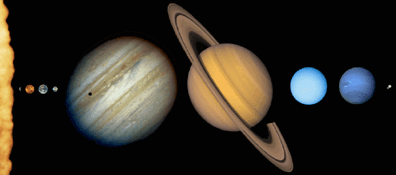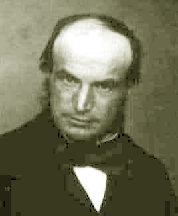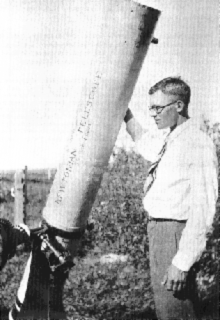

Only 3 of the 9 planets in our solar system have official "discoverers" and "times of discovery". The reason is simple - all of the other planets are easily seen by the unaided human eye. This means that humankind has been looking at these objects (whether they understood what they were or not) since first gazing at the night sky!
Three planets required good telescopes for their discovery:

| Uranus was discovered by Sir William Herschel in 1781. Herschel was probably the most famous astronomer of the 18th century. In addition to discovering the planet Uranus, he also observed and cataloged over 800 double stars and 2,500 nebulae. He was the first astronomer to correctly describe the spiral structure of our Milky Way Galaxy. |

| Neptune was discovered by John Couch Adams in 1846. Adams was an English astronomer and mathematician who, at the age of 24, was the first person to predict the position of a planetary mass beyond Uranus. Adams did not publish his prediction and it is a miracle that he is given credit by the scientific community for his work (let this be a lesson!). German astronomer Johann Gottfried Galle (along with Heinrich Louis d'Arrest) confirmed the existance of Neptune based on independent, published, calculations done by French mathematician Urbain Jean Joseph Le Verrier. Sometimes you will see Couch and Le Verrier cited together as the "discoverers of Neptune". |

|
Pluto was discovered by astronomer Clyde Tombaugh in 1930. A 9th planet
had been looked for for some time. It was believed that such a planet had
to exist in order to explain some odd things happening in the orbits of Uranus
and Neptune. Tombaugh did a careful sky survey at the Lowell Observatory
in Arizona. As a result, he discovered Pluto. The interesting thing to
know is that all of the orbital problems with Uranus and Neptune vanish
when the correct mass of Neptune is used in the equations; the correct
mass was determined by the Voyager 2 spacecraft when it flew by that planet
in 1989. So Tombaugh got lucky - he found a planet where a flawed prediction
said one would be!
|
![]()
The StarChild site is a service of the High Energy Astrophysics Science Archive Research Center (HEASARC), within the Astrophysics Science Division (ASD) at NASA/ GSFC.
StarChild Authors: The StarChild Team
StarChild Graphics & Music: Acknowledgments
StarChild Project Leader: Dr. Laura A.
Whitlock
Curator:
Responsible NASA Official: